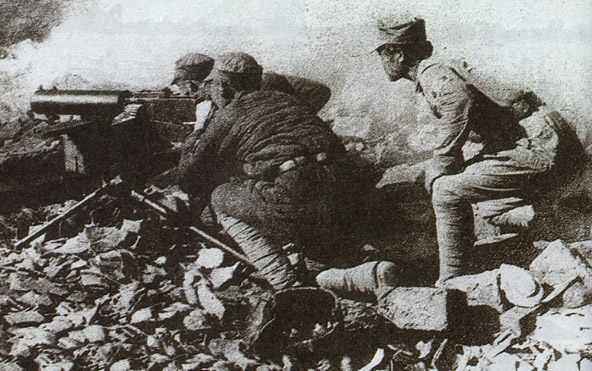Amid the brutal Sino-Japanese War (1937–1945), furious battles raged between Chinese and Japanese forces. The Imperial Japanese Army launched an attack to take Nanchang, a vital Chinese military base and supply hub. This led to the start of the Battle of Nanchang on March 17, 1939.
Chiang Kai-shek, the astute leader of China, fiercely resisted Japanese advances, ensured his troops’ provisions, and strategically positioned his army using key locations like Nanchang. Nanchang, in many ways, was the linchpin. Initially, it served as a vital railway hub connecting the southeast and interior of China. It also facilitated crucial supply lines for Chinese soldiers in central China. The city’s strategic significance was further underscored by its housing of key Nationalist military headquarters, making it a prime target for the Japanese.
The battle commenced on March 17, 1939, with the Japanese launching a comprehensive ambush on Nanchang. Backed by tanks, planes, and heavy artillery, over 120,000 Japanese troops advanced towards the city, aiming to seize control of Jiangxi Province and sever Chinese supply lines. Despite these overwhelming odds, the Chinese National Revolutionary Armed Force (NRA), under the leadership of General Xue Yue, valiantly defended their positions. The superior Japanese air power and coordination eventually forced the Chinese forces to retreat. The Japanese broke through Nanchang’s defenses in early April and captured the city on March 27, 1939. However, undeterred by this setback, the Chinese troops demonstrated their unwavering determination by launching numerous counterattacks to regain lost ground, inspiring awe in their resilience.
Despite Japan’s capture of Nanchang, both sides suffered significant losses in the war. Today, history students recognize the Battle of Nanchang as a pivotal moment in the Sino-Japanese War, underscoring the sacrifices made by Chinese forces in their fight for freedom. With its historical significance, the battle serves as a testament to China’s resilience in the face of defeat, a quality that continues to shape its military strategy and historical narrative.

